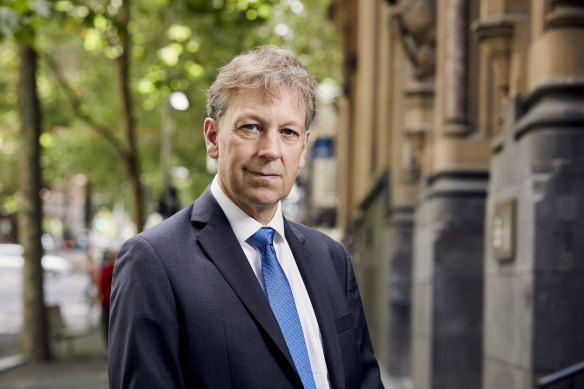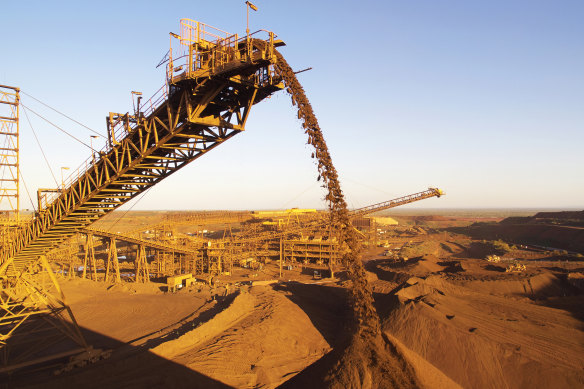By Nick Toscano
Rio Tinto chief executive Jakob Stausholm says the price of iron ore remains elevated by historical standards despite collapsing by more than half in the past 12 months and pummelling the mining giant’s core profits.
The nation’s second-largest miner on Wednesday reported a 30 per cent drop in half-year underlying earnings, and sharply reduced its interim dividend to $US2.67 a share, well below the $US3.05 that most analysts had been expecting.

“$US100 is still an attractive price for iron ore. It’s all about what you compare it against.“: Rio Tinto chief executive Jakob Stausholm.
Stausholm described the global economic outlook as “truly unpredictable” amid new waves of COVID-19 outbreaks, supply chain disruptions, the fallout from Russia’s invasion of Ukraine, inflation and the risk of recession.
While the market conditions for Rio Tinto’s core commodities had weakened compared to last year, Stausholm said they remained strong, and urged shareholders to remember that the company’s 2021 profit result had been a “record for the records”, boosted by a stunning rally in the price of the critical steel-making raw material, iron ore, to an all-time high $US230 a tonne.
“Now it’s less than half – but $US100 is still an attractive price for iron ore,” he said. “It’s all about what you compare it against.”
Rio Tinto’s first-half dividend, Stausholm added, amounted to a $US4.3 billion payout, which ranked as one of the biggest in Rio Tinto’s history. “It’s massive numbers,” he said.
Iron ore – the raw material processed in steel-making furnaces to churn out molten pig iron – is Rio Tinto’s biggest earner and Australia’s most lucrative commodity, bringing in $133 billion to the nation’s overall export earnings in the past financial year.
Benchmark iron ore prices reached a record high of $US230 a tonne in the first half of 2021, underpinned by an aggressive infrastructure building blitz in China fuelling enormous demand for steel at the same time as drawn-out supply disruptions dragged on iron ore mines in Brazil.
However, Rio Tinto and rival iron ore giants BHP and the Andrew “Twiggy” Forrest-led Fortescue Metals Group are facing iron ore prices that have fallen to as low as $US100 a tonne this month, as COVID-19 restrictions soften steel demand in China, the world’s largest iron ore consumer.
Rio Tinto’s lower first-half profit was also affected by lower sales volumes for the period. The company on Wednesday said its iron ore output from Western Australia’s Pilbara was 2 per cent lower, as mine sites were hit by new waves of COVID-19 disruptions, labour shortages, and significant rainfall.

Rio Tinto is Australia’s largest producer of iron ore, the key steel-making raw material.
Rio Tinto’s underlying profit of $US8.6 billion for the six months to June 30 was 30 per cent lower than the $US12.1 billion it reported a year earlier, but better than most analysts’ forecasts.
Investment bank Macquarie’s analysts said inflationary pressures had been mounting across the mining industry in the past six months, reflected in “higher fuel costs, surging electricity prices on the Australian east coast and escalating key input material costs”.
The Market Recap newsletter is a wrap of the day’s trading. Get it each weekday afternoon.